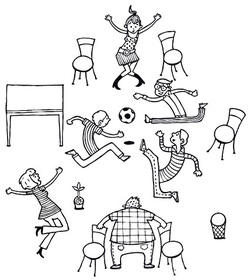
The first condition for participation is good communication.
The meeting and how it is carried out is consequently very important. It is about simultaneously accomplishing creativity, democracy and effectivity, which may not be very easy. Furthermore, it is important that not just a few speak, but everyone’s views should be brought forth. It is about having a distinct agenda for the meeting, so everyone agrees on the aim and the implementation. Everybody is not equally good at communicating, but there is a lot you can learn in order to improve your skills. There is, of course, also the opportunity of bringing in communicators and process leaders to help out in the work. Sometimes it may be a good thing to have neutral leader of the meeting to make more people engaged. Also furnishing, the room, time, group dynamics, consumption, etc. are important for creating good communication. It could also be important to know the master suppression techniques in order to avoid them. Those are the five (Berit Ås, 1976):
The meeting and how it is carried out is consequently very important. It is about simultaneously accomplishing creativity, democracy and effectivity, which may not be very easy. Furthermore, it is important that not just a few speak, but everyone’s views should be brought forth. It is about having a distinct agenda for the meeting, so everyone agrees on the aim and the implementation. Everybody is not equally good at communicating, but there is a lot you can learn in order to improve your skills. There is, of course, also the opportunity of bringing in communicators and process leaders to help out in the work. Sometimes it may be a good thing to have neutral leader of the meeting to make more people engaged. Also furnishing, the room, time, group dynamics, consumption, etc. are important for creating good communication. It could also be important to know the master suppression techniques in order to avoid them. Those are the five (Berit Ås, 1976):
- Making invisible (silencing or marginalising the oppositional by ignoring them);
- Ridicule;
- Withholding information;
- Double bind (being faced with a choice and getting disrespected or punished irrespective of whichever choice is made);
- Heap blame/put to shame.
 RSS Feed
RSS Feed
